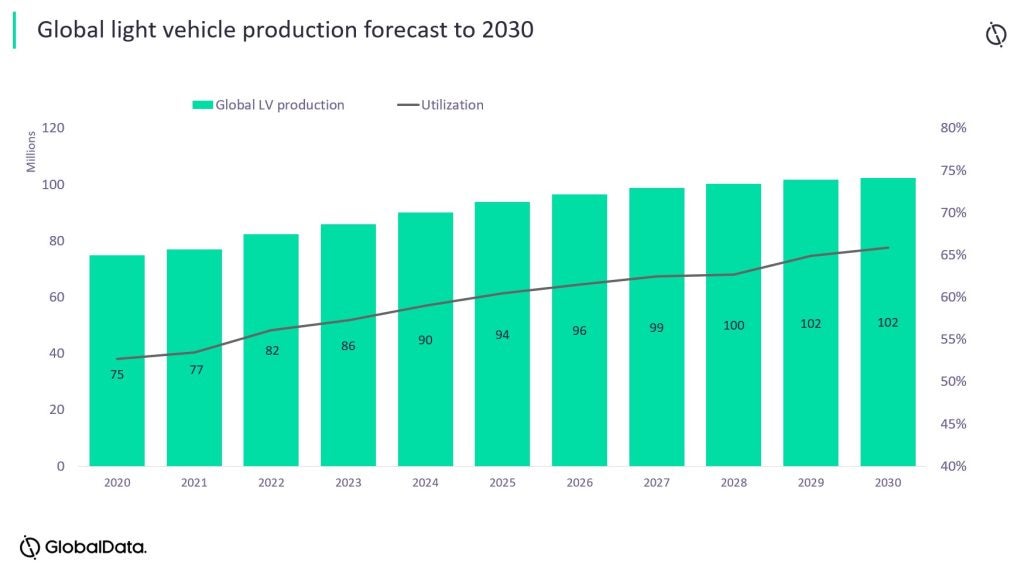
Analysis by GlobalData forecasts global light vehicle output for 2023 at 86.2 million units – almost 5% higher than in 2022. This growth comes despite the weak global economic backdrop and is fundamentally a result of easing supply-side disruption.
Output is still well down on pre-pandemic levels. In 2018, world light vehicle production hit an estimated 94.1 million units. In its latest forecast, GlobalData says the long-term outlook is for a ‘U’ shape recovery rather than the ‘V’ shape predicted back a few years ago.
After the pandemic of 2020, the supply of chips or semiconductors has been the biggest single cause of global light vehicle output disruption over the past year.
GlobalData senior analyst Justin Cox says the situation with supply side shortages is easing globally, but cautions that the crisis has not been fully resolved.
“The scale of the ‘chip’ impact has been falling, principally due to better supply chain management as well as an improvement in resources at semiconductor suppliers for auto-focused chips,” he says. “But nevertheless, the chip crisis has been so severe that we don’t think it will be fully resolved this year.”
Regionally, GD analysis suggests that the North America and European regions have been hit hardest by supply-side disruption. In addition, the situation in Europe has been further hit by the economic impacts caused by conflict in Ukraine. “That is expected to remain an enduring drag on the region,” Cox says, “with Central and Eastern Europe growth prospects hampered in particular.
“Europe also faces competitive threats from imports – particularly Chinese-built BEVs – as well as a more protectionist policy for its exports to North America.”





